You’ll be totally surprised to find out that many of the flowers that you have around your house are not only beautiful but very tasty. Flowers are an untapped source of nutrients that have been used for centuries in kitchens around the world. I’ve compiled the longest list of edible flowers on the Internet, so make sure you bookmark this page.
Tips:
- Not all flowers are edible, and some can even be poisonous, so be sure to identify the plant exactly and to eat only the edible parts.
- Eat only organically grown flowers. Don’t eat flowers from florists, nurseries, traditional garden centers, or unknown sources; those flowers could have been treated with pesticides.
- Don’t eat flowers if you have hay fever, asthma, or allergies.
- Don’t eat large quantities at once or you may develop adverse reactions.
- If you are pregnant, do a lot of research before eating any flowers.
List of Edible Flowers:
1. Red Clover (Trifolium pratense)
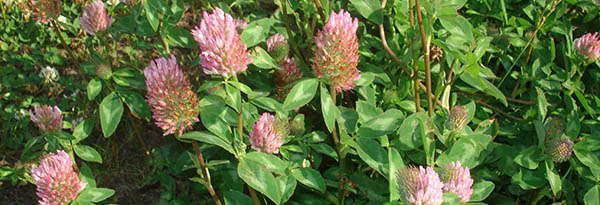
This plant is mostly used for medicinal purposes, and the leaves are usually dried and used to make tea. But the tastiest part is actually the flower. Toss them in salads for taste and color, or eat them with fruits and cheeses.
2. Althaea (Althaea officinalis)
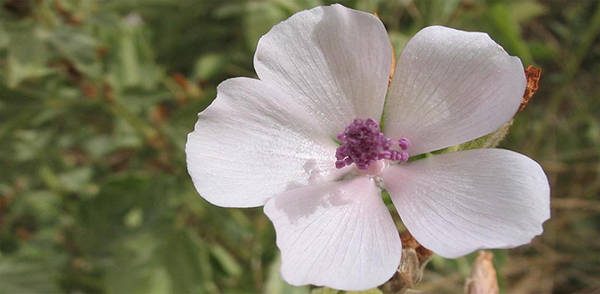 This flower is also called the common marshmallow. The plant was a delicacy in ancient Rome. The flowers are white to light purple or pink. To make a palatable dish, you can boil them and then fry them with onions and butter. They also make an attractive addition to any salad.
This flower is also called the common marshmallow. The plant was a delicacy in ancient Rome. The flowers are white to light purple or pink. To make a palatable dish, you can boil them and then fry them with onions and butter. They also make an attractive addition to any salad.
3. Angelica (Angelica archangelica)
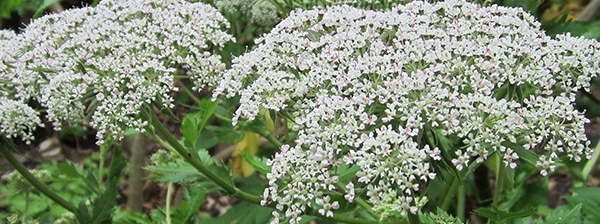
This is a plant mostly known for its medicinal uses, but it’s also edible. The color ranges from pale lavender-blue to deep rose, and it has a licorice-like flavor. You can eat the stems, leaves, seeds, and roots. The taste resembles juniper berries, and they are usually used in soups, stews, and salads. The plant is also a popular flavoring for confectionery and liqueurs.
4. Anise Hyssop (Agastache foeniculum)
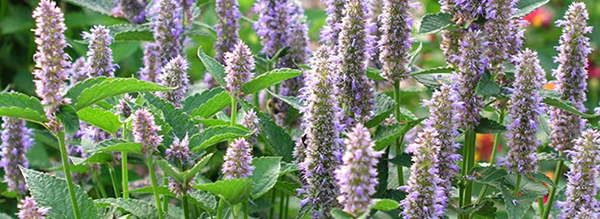
These Midwestern prairie native edible flowers are purple and anise-scented foliage. The leaves and flowers are quite tasty and have a sweet lemony licorice flavor. You can use them to sweeten tea and flavor sugar, bread, and honey.
5. Apple blossoms (Malus species)
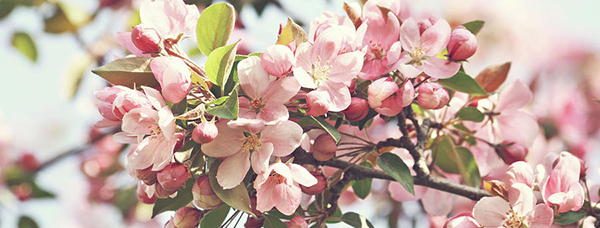
Apple blossoms are generally edible, but they also contain small amounts of cyanide, just as apple wood, leaves, and seeds do. So please use them in fruit salads instead of making them your first course.
Related: If You See This Plant, Whatever You Do Don’t Touch It!
6. Arugula (Eruca vesicaria)
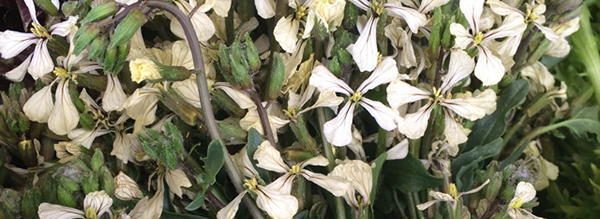
You probably use this plant in salads, but you might not be aware that you can eat the flowers too. These edible flowers have a milder taste than leaves, so they are great in salads or as a snack.
7. Rose (Rosa spp.)
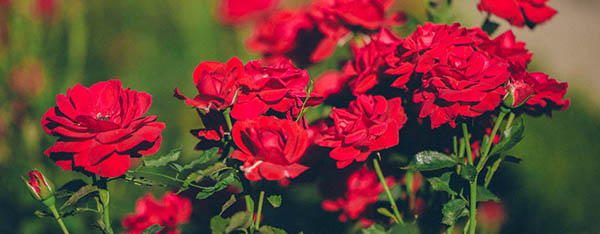
Roses are one of the most popular edible plants. They are renowned for their beauty and taste. They are commonly used for desserts: jam, jellies, marmalade, baklava, halva, gumdrops, nougat, or cakes. If you press them, you can make rose hip syrup. Rose petals or flower buds are sometimes used to flavor ordinary tea or combined with other herbs to make herbal teas. Because of their beauty, they are often used as garnish. Just remember to remove the bitter white portion of the petals.
8.Bachelor’s button (Centaurea cyanus)
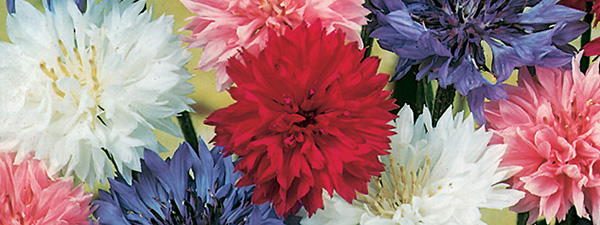
This flower is a colorful addition to any salad. It’s usually blue-purple, but you might also find it in white, red, or pink. It can be sweet to spicy. Be careful: Only the petals are edible. It can be used as a garnish on any plate.
9. Banana blossoms (Musa paradisiaca)
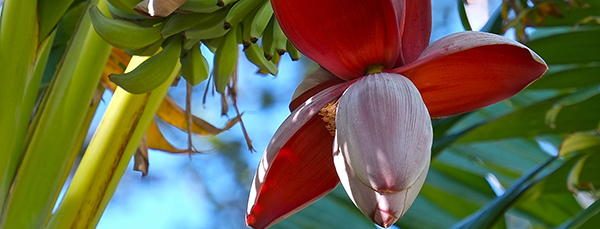
These edible flowers have been in used in Asian kitchens for centuries. You can find them at the end of the banana fruit cluster. You can eat it raw or cooked in soups, stews, and curries. You can also steam it, serve it with dips, and peel it apart like an artichoke. When choosing a banana blossom, look for the purple ones that are firm and have tightly packed petals.
10. Bee Balm (Monarda didyma)
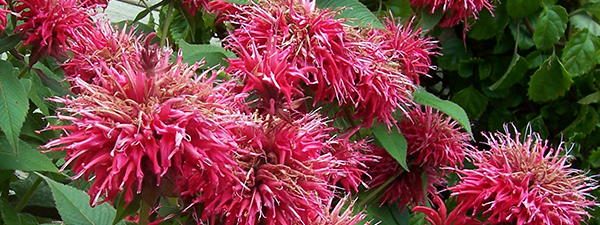
Bee balm has red, pink, or lilac-colored flowers, and it’s used mostly to season meats or to spice up salads or jellies. The flavor resembles mint. It’s a natural antiseptic and used to soothe a sick tummy or cure a sore throat.
Related: A Medicinal Plant MAP That Should Be in Your Survival Kit
11. Black Locust (Robinia pseudoacacia)
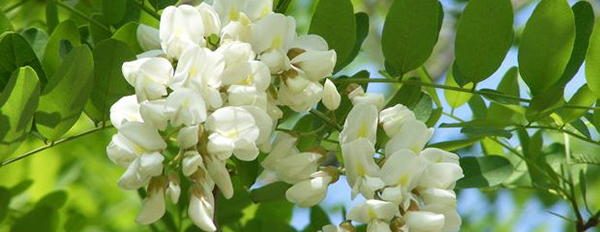
You have to be careful with this flower because only the flowers are edible. The best way to eat them is raw. They have a sweet, fragrant flavor, but you can also use them in soup, salads, or pancakes. Flowers are consumed as fritters in many parts of Europe.
12. Borage (Borago officinalis)
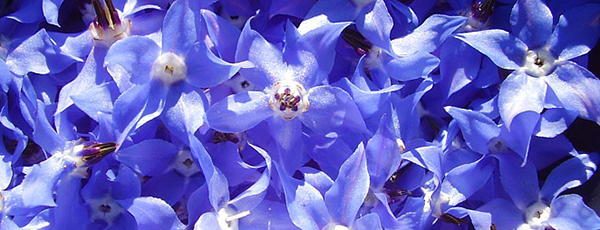
Borage has blue star-shaped edible flowers. The leaves taste and smell like cucumber. You can steam them and prepare them like spinach or stinging nettles. Be careful though; they have a diuretic effect, so eat in moderation. Pregnant and lactating women should avoid borage flowers.
13. Calendula (Calendula officinalis)
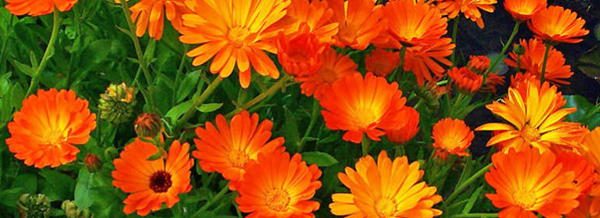
Calendula is also called marigold or pot marigold. This is not to be confused with French marigold, which is not an edible flower. The taste is slightly bitter, but it has a certain flavor I’ve never tasted before. Calendula is an antibacterial, antiseptic, and antifungal.
14. Carnations (Dianthus caryophyllus)
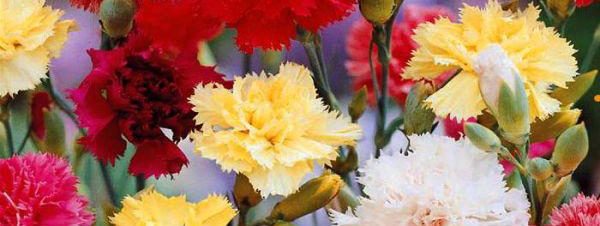
Only the petals are edible. They taste sweet, but remember to remove the bitter white base. After that, you can add them to jellies, salads, herb butters, and liqueurs.
15. Chamomile (Chamaemelum noblis)
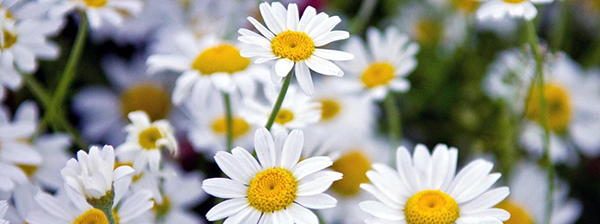
Chamomile is easily recognizable by the tiny daisy-like flowers and is white and cone shaped. It is used mostly for tea. If you’re allergic to ragweed, you may be allergic to chamomile as well.
16. Chervil (Anthriscus cerefolium)
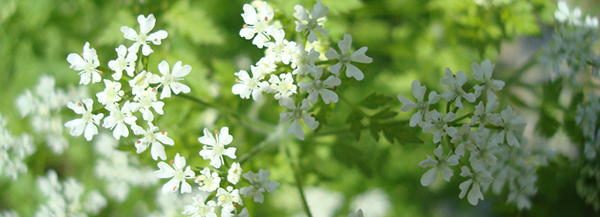
Chervil flowers are white; they are best used in salads or chopped and sprinkled over cold potatoes as their flavor is very mildly like parsley. You can also eat the seeds and leaves. It is better to eat them raw because they lose flavor easily when cooked.
17. Chrysanthemum (Chrysanthemum morifolium or Chrysanthemum indicum)
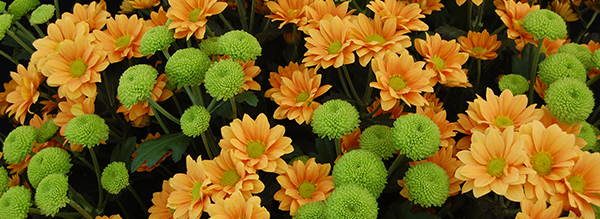
These edible flowers range in color from red, white, yellow, and orange. The flavor varies widely from plant to plant, from sweet to tangy to bitter or peppery—even a mild cauliflower. It’s also recommended to remove the bitter white base. The petals are best used in salads. The leaves can be used to flavor vinegar. If you want to make your own apple vinegar, try adding this to the recipe. The flower is native to Asia, and it has been used in Japan for centuries in stir fries and as salad seasoning.
18. Citrus blossoms (orange, lemon, lime, grapefruit, kumquat)

These edible blossoms are white and, no surprise, citrusy; in fact, the flavors are used often in cooking. They can be used fresh or can be dried or frozen. You can infuse honey with them, add them to butter or soft cheeses to give them a sweet citrus flavor, or make a lovely tea.
19. Clover (Trifolium)
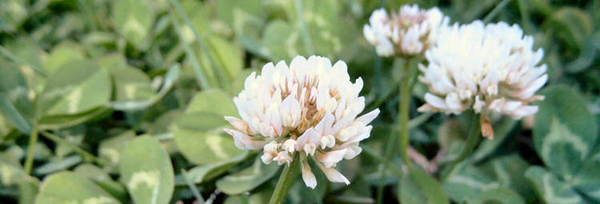
You can chop the leaves into salads or sauté them and add them to different dishes. You can also eat the flowers of both red and white clover raw or cooked, or you can dry them and make tea. Clovers are an excellent survival food as they are high in protein and you can find them pretty much everywhere.
20. Dandelions (Taraxacum officinale)
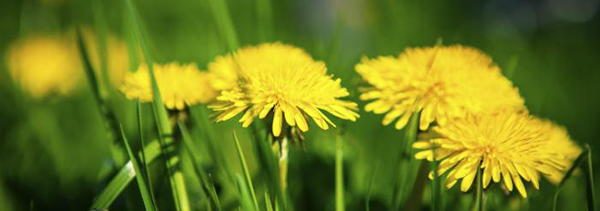
You can eat every part of this plant, but it’s better to use young flowers and buds as mature flowers are bitter. You can eat the leafs raw or steamed, or you can add them to a stir fry or soup. These tasty flowers are sweet and crunchy and can be eaten raw or breaded and fried. You could also make dandelion wine. The root of the dandelion can be dried and roasted and used as a coffee substitute or added to any recipe that calls for root vegetables.
21. Daylilies (Hemerocallis)
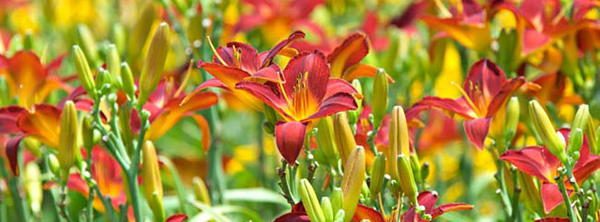
You can eat the buds, flowers, and petals. They have a slightly sweet, mild vegetable flavor, like sweet lettuce or melon. Their flavor is a combination of asparagus and zucchini. You can use the petals in desserts, but it’s better to cut them away from the bitter white base of the flower. I also use them to stuff squash blossoms. Because the flowers are so beautiful, I use them on composed salad platters or for crowning a frosted cake. In the spring, gather shoots two or three inches tall and use as a substitute for asparagus. Be careful, and eat in moderation; it can have diuretic and laxative effects in some people, plus many lilies contain alkaloids and are not edible.
22. Elderflower (Sambucus species)
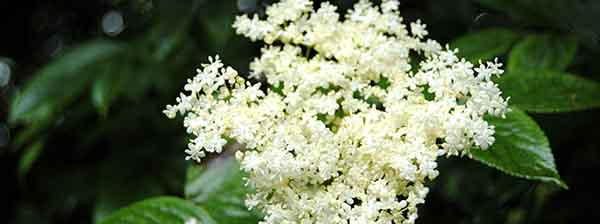
Although the blossoms are usually used in soft drinks, elderflower cordial is very popular, you can use them for tea, syrup, jelly, and wine. You can also make elderflower vinegar. In Germany, elderflower fritters are a specialty. Only the flowers are edible however; the stems, leaves, twigs, and roots are toxic. Tip: Shake flowers to remove dirt or insects, and rinse briefly only if you have to; washing flowers removes much of the flavor.
Related: How to Make the Most Powerful Natural Antibiotic
23. English Daisy (Bellis perennis)
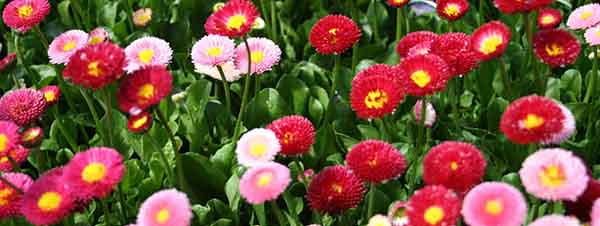
These edible flowers have been used medicinally for centuries for eye problems. You can eat the flowers, leaves, or buds. The flowers have a mildly bitter taste, and the petals are used as a garnish and in salads. The leaves have been used as a cooked green, usually boiled, or as a pot herb. Flower buds are eaten in sandwiches, soups, and stews or pickled and used like capers.
24. Fireweed (Epilobium angustifolium)
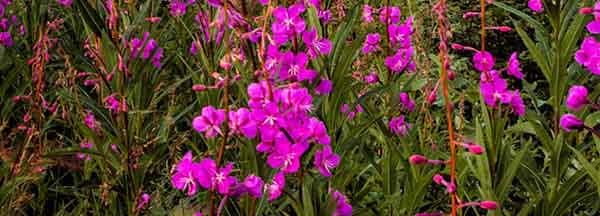
You can recognize these edible flowers by their pink to purple spike-shaped blossoms. It contains Vitamin C, flavonoids, and beta-carotene. You can eat it fresh, sautéed, or steamed. You can pick young leaves and eat them like spinach or use them as an asparagus substitute. Larger stalks can be split and the inner pith scraped out and eaten as a sweet treat. You can roast the root after scraping off the outside to mitigate the bitter flavor; the root is collected before the plant flowers, and the brown thread in the middle is removed. Flower stalks can be consumed raw or cooked and are used when the flowers are in bud. The pith of young or older stems is consumable raw or cooked.
25. Garland Chrysanthemum (Chrysanthemum coronarium)
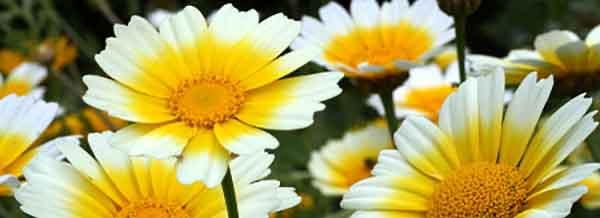
This plant is used in many cuisines, usually in stews, casseroles, and hotpots. Young leaves and stems are used for flavoring the soup. It may be stir fried or steamed like spinach but is best used in combination with other greens or vegetables. It’s rich in vitamins and mineral salts.
26. Ginger (Zingiber officinale)
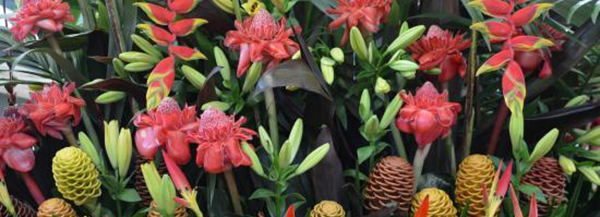
Although ginger is very common, not a lot of people know that it has edible flowers too. You have to cut away the hard petals and eat the bud itself. It will give your plate a spicy/sour base that is unattainable from any other ingredient. Just make sure to chop it really finely or blend it because it’s very hard and the plant and could be uncomfortable to swallow.
27. Gladiolus (Gladius)
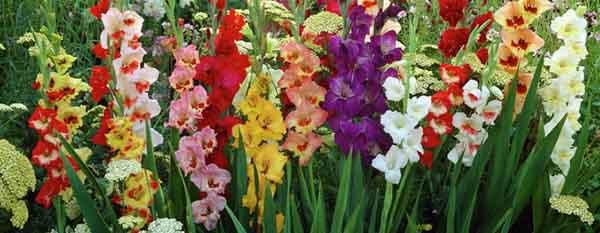
Gladiolus have a wide range of colors. The blossoms are bland and lettuce like, but you have to remember to remove the anthers and eat only the petals. You can eat them raw or cooked. You can use them as containers for seafood or fruit salad, salsa, chili poppers, dips, or cheese-stuffed jumbo olives as well as a dessert. The best time to pick them is in the early morning before the sun dries them.
28. Green Alkanet (Pentaglottis sempervirens)
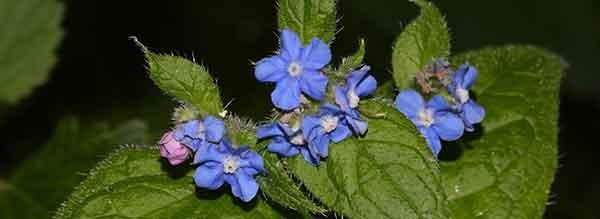
Green alkanet is a member of the borage family, and the flowers are actually blue rather than green. The leaves are not edible, but the flowers are perfect as a garnish. You can use it to decorate cocktails and salads.
29. Dame’s Rocket (Hesperis matronalis)
You can eat the leaves if they are young—they are usually picked before the plant flowers—the seeds, or the flowers. The coloration varies; most commonly the petals are different shades of lavender and purple. You can also find white, pink, and mixed colors in cultivated forms. They are usually tossed in salads because of their bitter flavor. You can also use them in soups or fruit dishes.
30. Hibiscus (Hibiscus)
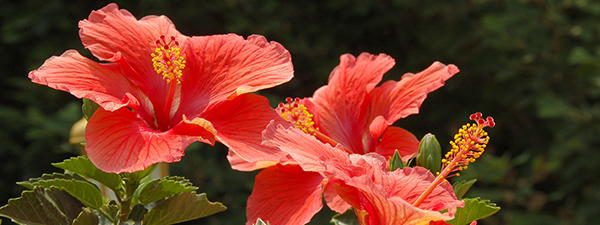
These edible flowers are admired for their beauty and lively colors, ranging from red to white, yellow to purple, etc. They have a citrus-like flavor that can enrich any dish. They are great in fruit salads and cheese platters. You can also use them to decorate any kind of dessert or to make tea.
31. Hollyhock (Alcea)
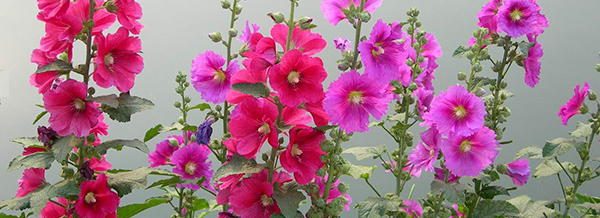
There are over 60 species of hollyhocks, with different colors ranging from white to red to purple, etc. You can eat everything from this plant: the root, leaves, and blossoms. It’s actually a cultivated vegetable in Egypt (the root has starch).
32. Honeysuckle (Lonicera japonica)
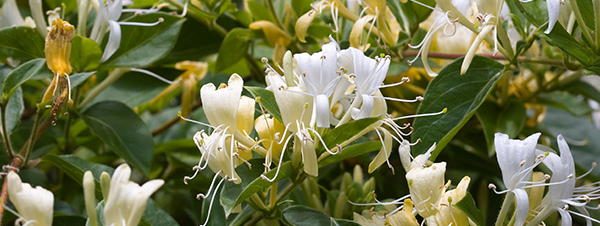
The most important thing you have to remember about this flower is not to eat the berries; they are highly poisonous. This is one plant where taste is not a measure of edibility. The flowers of Lonicera japonica are edible however. This flower gets its name because edible sweet nectar can be sucked from the flowers.
33. Impatiens (Impatiens wallerana)

Impatiens, also known as Busy Lizzie, might be bright white or vibrant red. Their petals are edible and have a surprisingly sweet flavor. They are usually used in salads or floated in fancy drinks.
34. Jasmine (Jasminum sambac, Jasmine officinale)
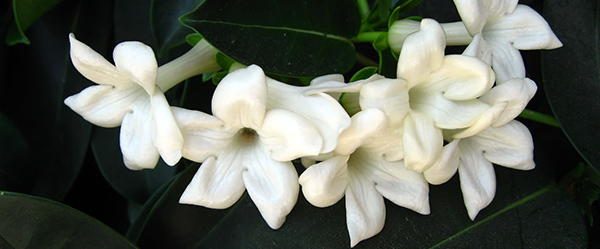
These edible flowers are intensely fragrant, while their color can be white or yellow; in rare instances, they can be slightly reddish. They are traditionally used for scenting tea but can also be added to shellfish dishes. Just remember to be careful because false jasmine is in a completely different flower and is considered too poisonous for human consumption.
35. Johnny Jump-Ups (Viola tricolor)
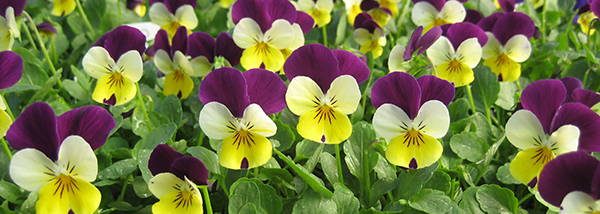
This plant produces a multitude of small, brightly colored flowers. Their colors range from purple blue, yellow, or white, and they have a wintergreen flavor. The leaves and flower buds may be eaten raw or cooked. They are great for decorating cakes; you can serve them with soft cheeses or toss them in a salad. They are also a great addition to drinks, soups, or desserts. The flowers contain saponins, which are toxic in large amounts, so you should eat them in moderation.
36. Kale blossoms (Brassica oleracea var. acephala)
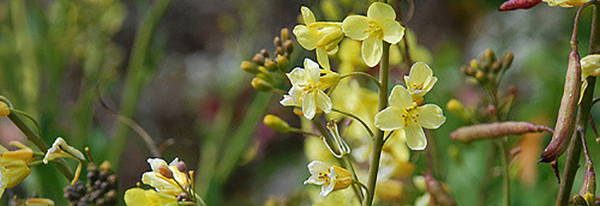
Everybody knows kale is edible, but did you know the blossoms are edible too? And they are delicious. If you like kale or broccoli, you definitely will like them.
37. Lavender (Lavandula species)
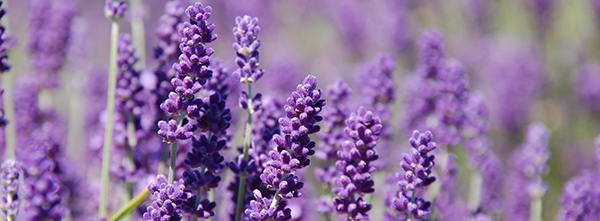
Related: You Pass by This Plant Everyday Without Knowing How to Use It When SHTF
This beautiful flower can be blue, violet, or lilac and, in the wild species, occasionally blackish purple or yellowish. It is best known for its essential oil of lavender that has antiseptic and anti-inflammatory properties. It is also used in bath products or in fragrances. As an edible flower, it is used mostly as a condiment in salads and dressings; it gives dishes a subtly sweet, citrus flavor. You can even make lavender sugar. You can also use it in cake decoration or pair it with cheeses. In the U.S. it is mostly used in recipes for lavender scones and marshmallows.
38. Lemon Verbena (Aloysia triphylla)
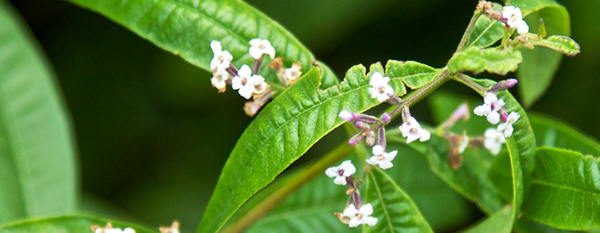
This tiny purple flower appears in late spring or early summer. It is used to add a lemon flavor to fish and poultry dishes, vegetable marinades, salad dressings, jams, puddings, Greek yogurt, beverages, and even sorbet. You can use the leaf as a substitute for lemon zest in almost any recipe. It is fine in both sweet and savory dishes. It is also used for tea because it is said to help with muscle spasms, stomach pain, menstrual cramping, and anxiety as well as being a fever reducer.
39. Lilac (Syringa vulgaris)
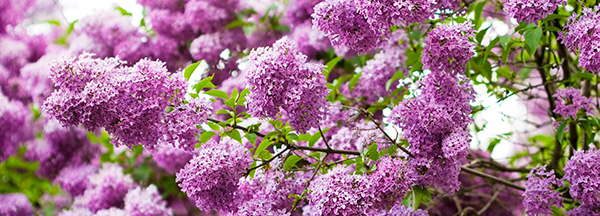
This flower is a very popular ornamental plant; you will easily find it in gardens or parks because of its radiant beauty and sweet fragrance. The flowers are edible, and some even have medicinal qualities. The flavor varies from plant to plant, but most of them have a distinct lemony taste with floral, pungent overtones. You can toss them in salads or crystallize with egg whites and sugar. You can make jellies, wine, liqueur, and even ice cream.
40. Linden (Tilla species)
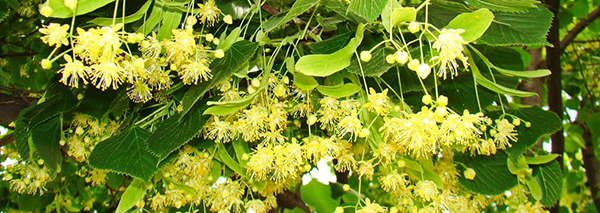
Linden flower tea has been used in European folk medicine for centuries to treat a wide range of health problems. Flowers from two linden species (Tilia cordata and Tilia platyphyllos) were used to soothe nerves and treat health problems associated with anxiety. Just remember to use in moderation; overuse of linden flower tea can cause heart damage. They produce a lot of nectar, creating high-quality honey. You can use also them in dishes. When steaming vegetables, try adding linden flowers to the steaming water. You can make syrup or infuse wine or almond milk with the flowers as well.
41. Marjoram (Origanum majorana)

Related: This Free Application Identifies Plants On the Spot
These edible flowers are used lightly at the end of the cooking process and adds a nice, mellow flavor to vegetables such as spinach, beans, peas, and carrots. You can toss the flowers in salads or herbed butters, and they can be used for seasoning soups, stews, dressings, and sauces as well as in vinaigrettes. The flowers are a milder version of the plant’s leaf. Another way to use the flowers is to fry them in Moringa oil and eat the fried Moringa flowers as a snack. These flowers are considered a delicacy in many places.
42. Nasturtium (Tropaeolum majus)
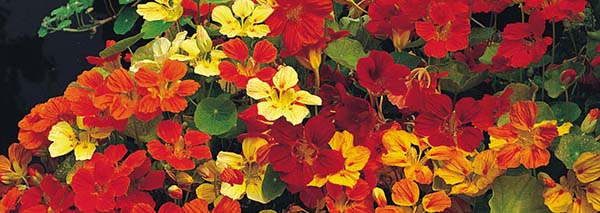
Nasturtiums are one of the tastiest and easiest flowers to grow, and they often have showy, intensely bright flowers. All parts of this plant are edible. The flower is most often consumed; it has a slightly spicy, peppery flavor. In Latin, nasturtium means “nose twist.” Flower buds, flowers, and young leaves are generally used for salads. For salads, harvest nasturtium in the cool of the morning, when flowers have just opened. You can also use nasturtiums in stir-fries or cook them with pasta or soups and stews. Nasturtiums have antiseptic and expectorant qualities.
43. Okra (Abelmoschus esculentus)
This plant is an easy and low maintenance vegetable that has large, hibiscus-like flowers with white to yellow petals, often with a red or purple spot at the base of each petal. The flowers bloom for a day, so you have to be quick. You can use them as a rather beautiful garnish. You can also toss them in salads or serve them with fruits. You can use them to thicken stews as well.
44. Ox-Eye Daisy (Chrysanthemum leucanthemum)
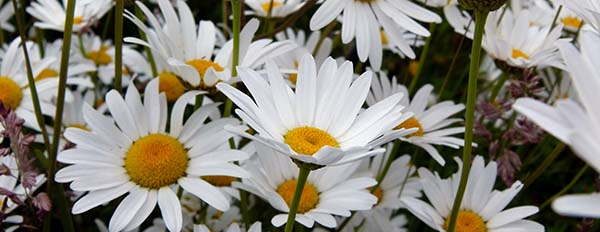
This small flower has about 20 white ray florets that surround a yellow disc. The flowers and leaves have a slightly bitter taste and are usually tossed in salads. You can marinate the unopened flower buds and use them in a similar way to capers. The fresh or dried leaves and flowers can also be used to make tea. You can also try to eat the root raw, preferably in the spring.
45. Pak Choy (Brassica chinensis)

Related: An Awesome 72 Square-Feet SHTF Medicinal Garden Plan
Choy sum has white or green stalks and yellow flowers. The blossoms are frequently used in salads. They are delicate in size and texture, yet their flavor is bold. Notes of black pepper and mustard saturate the palate, and the flavor lingers, similar to the nature of spices. This bud, though, is equally edible and lovely. The rest of the plant is wonderfully edible as well, including the stem after it sends up its flower spike.
46. Pansy (Viola x Wittrockiana)
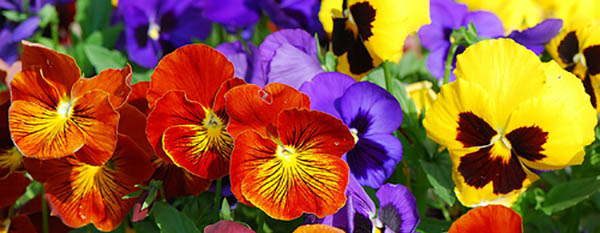
Pansies come in so many different colors and combinations. They can have a mild, fresh flavor or a more prominent wintergreen taste depending on the variety and on what part of the flower you eat (a whole flower tastes stronger than the petals alone). Remember to eat only the petals and to remove the pistils and stamens before eating. You can use them to garnish cocktails, soups, and desserts. They also can be used for decorating.
47. Passion Flower (Passiflora spp.)

This unusual flower comes in many colors and combinations. It has a vegetable flavor and is often used as a garnish. It is both an edible and medicinal plant. The flowers can add a tasty and decorative touch to salads. Otherwise, you can use it to make a syrup or tea. If you want to eat the seeds, be careful—they might contain an amount of cyanide, and one should not eat them in large amounts.
48. Pea Blossoms (Pisum sativum)
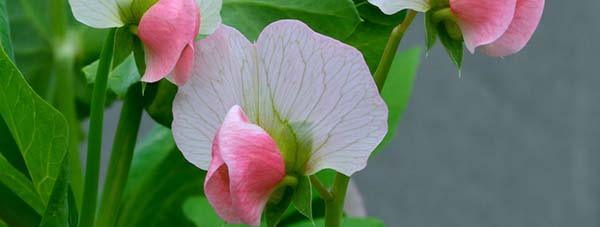
Edible garden peas usually have white flowers but may have other pale coloring. The flowers are slightly sweet and crunchy and taste like peas. They are usually eaten raw; you can add them to salads or use them to decorate fish dishes or cakes. The shoots and vine tendrils are edible too and have the same delicate, pea-like flavor. NOTE: Flowering ornamental sweet peas are poisonous, so do not eat them.
49. Peony (Paeonia lactiflora)
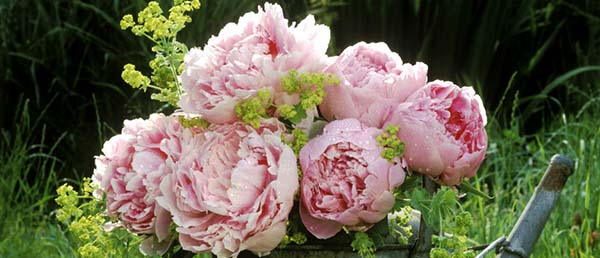
These beautiful flowers have a fragrant smell and colors ranging from red to white to yellow in late spring and early summer. You can add petals to your summer salads, serve them with fruit, or use them to decorate cakes and other pastries. The fallen petals of a peony are parboiled and sweetened in China and are served as a tea time delicacy.
50. Perennial Peanut (Arachis glabrata)
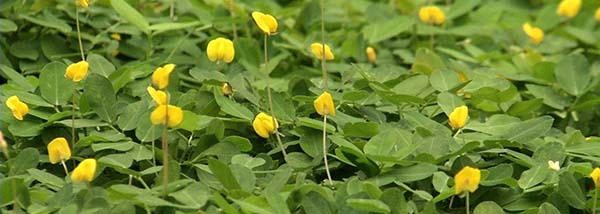
This plant has beautiful bright yellow blossoms that love the sun. The flowers taste like peanuts and can be added to a number of dishes. You can toss them in salads or serve them with fruits and cheeses. You can also use them to decorate cakes or even make peanut blossoms cookies.
51. Perennial Phlox (Phlox paniculata)
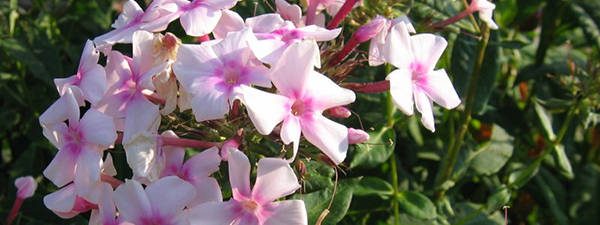 These tall columns of fragrant, edible flowers are some of the easiest perennials to grow. The colors vary from a reddish purple to pink, with some white. Their taste is slightly spicy. and they are usually used in fruit salads. Other species of phlox (such as annual or creeping phlox) are not edible.
These tall columns of fragrant, edible flowers are some of the easiest perennials to grow. The colors vary from a reddish purple to pink, with some white. Their taste is slightly spicy. and they are usually used in fruit salads. Other species of phlox (such as annual or creeping phlox) are not edible.
52. Pineapple Guava (Feijoa sellowians)
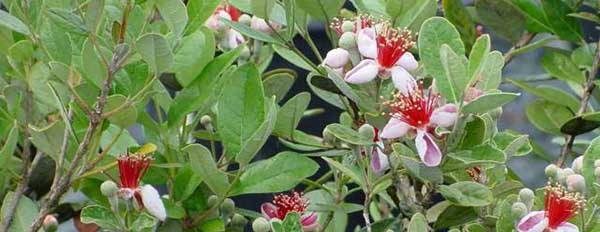
The pineapple guava fruit tastes like pineapple, apple, and mint. In the fall, the flowers begin to bloom with sugary pink and are actually edible. These petals are mildly sweet, and you can eat them right off the plant and can make a refreshing addition to spring salads. You can pluck them without interfering with fruit set.
53. Pineapple Sage (Salvia elegans)
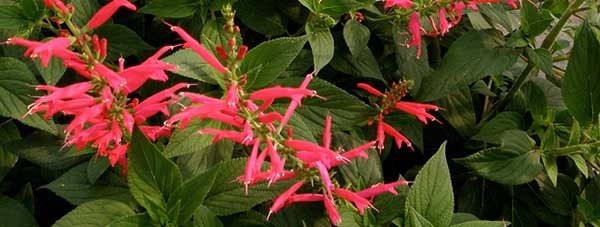
Salvia elegans has beautiful tubular red flowers that have a minty, spicy flavor. You can steep them in hot water to make an herbal tea or jam. You can toss them in salads or fruit dishes and serve them with cheese. The sweet scented leaves complement nearly all types of dishes that call for a rich flavor.
54. Pomegranate (Punica granatum)
This plant is grown for its fruit but also for the beautiful orange-red tubular edible flowers with ruffled petals. The pomegranate’s flowers, leaves, bark, and peel are all edible. Medical benefits include stopping nose and gum bleeds and toning skin.
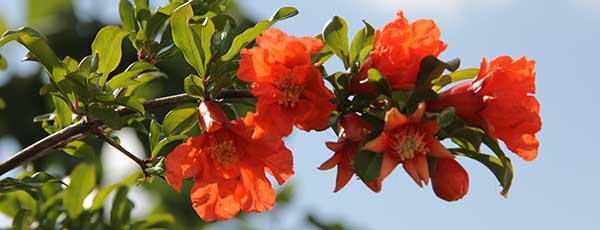
55. Prickly Pear Cactus (Opuntia species)
The entire plant is edible: the pad of the cactus, which can be treated like a vegetable; the petals of the flowers, which can be added to salads; and the pear, which can be treated like a fruit. When you harvest prickly pear cactus, remember to use gloves. You have to peel it carefully to remove the small spines on the outer skin before consumption. You can make a variety of dishes from this plant: desserts (cakes, pies, jellies), drinks (prickly pear wine, cocktails, coolers), or salads. You could also eat them raw; you just have to cut them into small pieces.
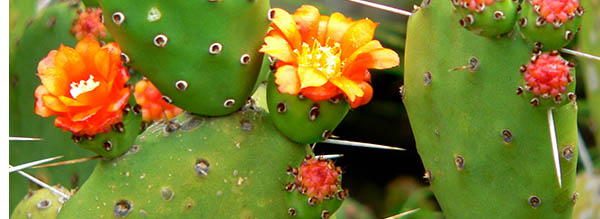
56. Primrose (Primula vulgaris)
This beautiful flower is one of the earliest spring flowers, and its name means first rose. The flowers are typically pale yellow, but sometimes you might find them in white or pink. The flowers and leaves are edible, with the flavor ranging between mild lettuce and more bitter salad greens. They will make a fine addition to any green salad while also adding some color. You can use the leaves for tea, while the young flowers can be made into primrose wine. The leaves of the second year plant can be used with greens in the kitchen, while the roots can be eaten raw (in small quantities) or roasted. You can even roast the seed pods while they are young.
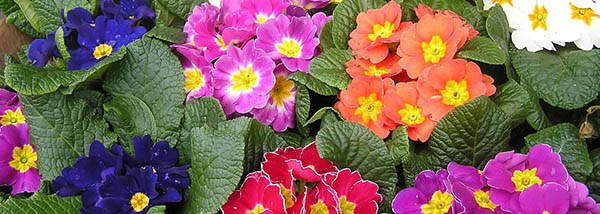
57. Pumpkin Blossoms (Cucurbita pepo)
You can use pumpkin blossoms to garnish dishes or dredge them in a batter and fry them in oil. Pumpkin flowers have a lovely, sweet, mild pumpkin flavor. You should pick only the male flowers; the female flowers have a tiny pumpkin at the base. The best time to pick them is early in the morning when they are in full bloom. Wash them and dry carefully; then place them in a zip-lock bag and keep them in the refrigerator to keep fresh. Eat them in a salad; if you toss ripped flowers on top of greens, they look beautiful and taste delicious. My favorite dish is sautéed pumpkin flowers with ricotta. Truly one of the tastiest edible flowers you will find.
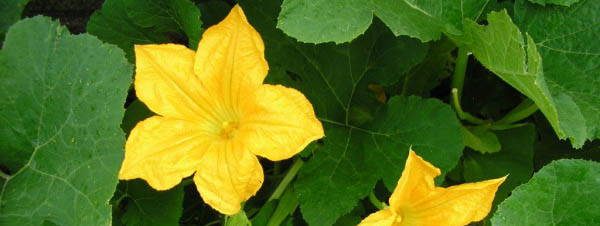
58. Quince (Cydonia oblonga)
Quince flowers have a mild almond taste. You have to pull the petals away from the center of the flower, discarding the tougher part. They make a great vinegar for salad dressings. Remember to eat them in moderation as they contain small amounts of cyanide, as all plants in the apple family do.
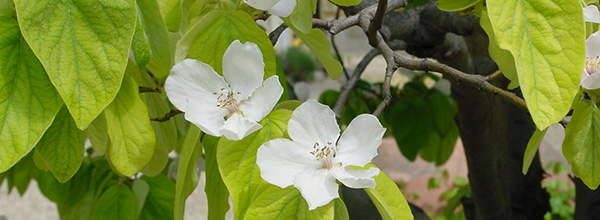
59. Radish Blossoms (Raphanus sativus)
Radishes produce one of the prettiest flowers in the edible garden. Their flavor is a milder version of the spicy root. You can add them to salads or sprinkle them over cooked vegetables to add a little spice. They taste really good and add a pop of color. You can even eat the seed pods, which are quite crunchy.
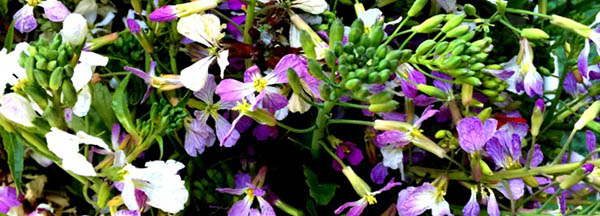
60. Rosemary (Rosmarinus officinalis)
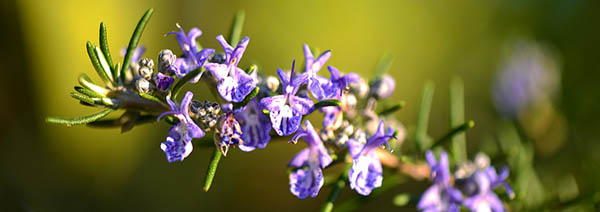
Rosemary is a perennial herb with needle-like leaves and white, pink, purple, or blue flowers. It’s mostly used for seasoning. It has a bitter, astringent taste and a mustard-like aroma that complements many cooked foods, usually roasted meats and vegetables. The leaves can also be used for tea. The flower taste is more intense than its leaves.
61. Safflower (Carthamus tinctorius)
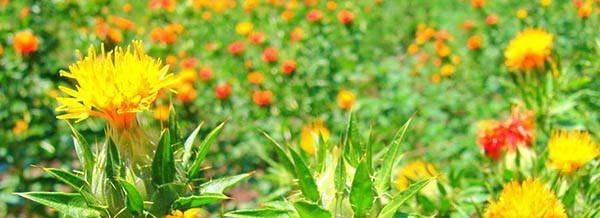
Traditionally, this plant was grown for its seeds and used for coloring and flavoring foods as well as being used in medicines. In the last fifty years it has been cultivated mainly for the vegetable oil extracted from its seeds. The edible flowers are used for seasoning; they are a cheaper substitute for saffron.
62. Sage (Salvia officinalis)
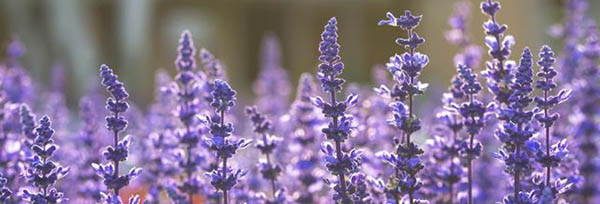
This plant has been traditionally used for medicinal purposes; its name actually means saving/healing. It’s used mostly for tea. The best time to cut the flowers is right before they peak, when the flowers are partially, but not entirely, open. You can always toss the flowers in salads or use them as a garnish as well.
63. Savory (Satureja hortensis)
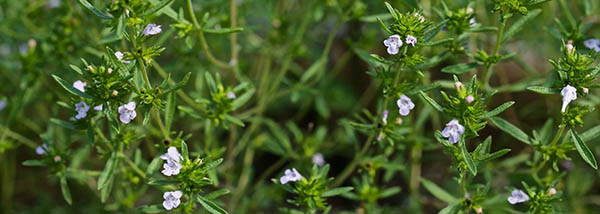
This lilac flower is widely used as a seasoning for grilled meats and barbecues as well as in stews and sauces. Because of its sweeter aroma, summer savory is preferred over winter savory. Summer savory is also preferred over winter savory for use in sausages because of its sweeter, more delicate aroma.
64. Scarlet Runner Beans (Phaseolus vulgaris)
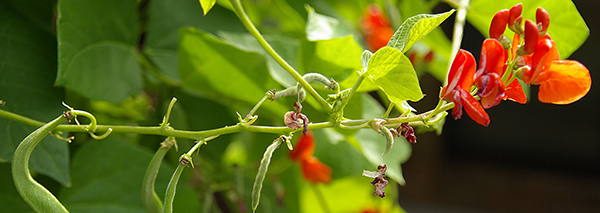
These edible flowers have red or white blossoms and multicolored seeds; they are often grown as ornamental plants. You can eat the beans raw when they are young or lightly steam them in the pods and enjoy them as a snack like you would eat soy beans. The flowers have a mild and sweet flavor. You can use them to garnish or in salads, soups, and desserts.
65. Scented Geraniums (Pelargonium species)
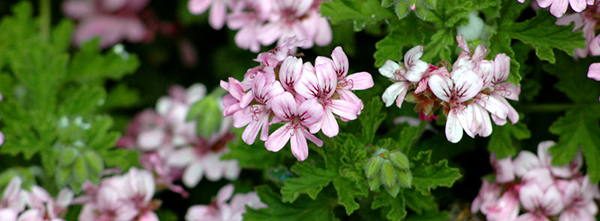
This beautiful flower has a wide pallet of flavors, from rose to lemon to nutmeg. You can use the flowers to make jellies, cakes, butters, ice creams, iced tea, or sugar, and the leaves can be added to soups, stews, and sauces for flavor.
66. Sesbania bispinosa
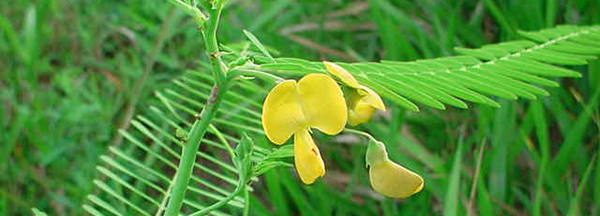
These lovely, small yellow flowers have been eaten as a vegetable in Southeast Asia for centuries. They are smaller than the more popular white flowers of Sesbania grandiflora. They are usually used in omelets or stir fry recipes. You can also toss them in salads or use them to decorate sweets.
67. Allium blossoms (leeks, onion, garlic, chives, etc.)
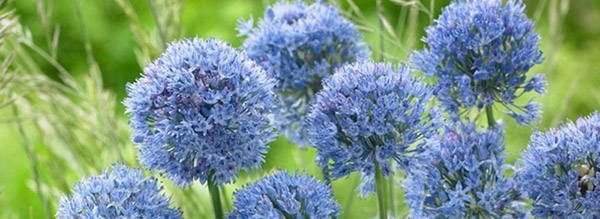
There are over 400 alliums, including garlic, onion, chives, ramps, and shallots. They have a spherical shape, and their colors variate from white, pink, blue, purple, and yellow. All of their parts are edible, but the flowers and the leaves are preferred. Their flavors range from mild onions and leeks right through to strong onions and garlic. They are mostly used in salads and soups.
68. Sesbania grandiflora
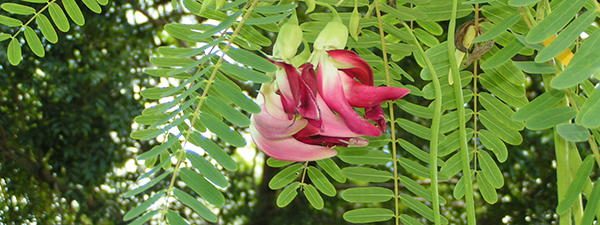
Just like Sesbania bispinosa, the flowers of S. grandiflora are eaten as a vegetable in Southeast Asia. They use them in curries or eat them raw. The young pods are eaten as a vegetable, similar to string beans. Young leaves can be tossed in salads or in soups and stews. The taste resembles mushrooms, and they are rich in iron as well as sugar. Just remember that all other parts are toxic.
69. Signet marigold (Tagetes signata)
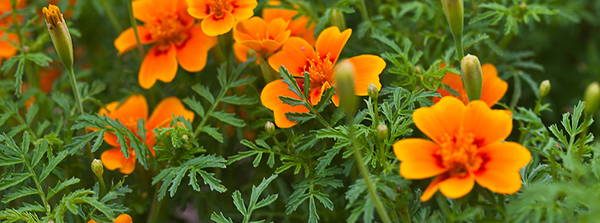
This is a species of the wild marigold in the daisy family. These edible flowers are usually used as a garnish. They are used in salads or to decorate desserts. Remove the petals from the flower base before consuming as the base can be quite bitter. They provide a touch of color and have a citrusy flavor.
70. Snapdragon (Anthirrhinum majus)
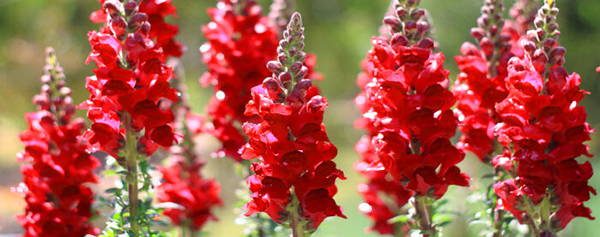
These gorgeous edible flowers have this name because of the flowers’ fancied resemblance to the face of a dragon that opens and closes its mouth when laterally squeezed. They have a bitter flavor reminiscent of chicory and are usually used as a garnish. They are used in salads and on canapés. Because they are very robust, they make a good choice for garnishing buffets or cakes; they will hold without collapsing for several hours.
71. Squash Blossoms
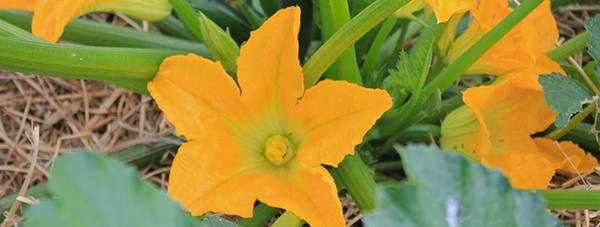
These lovely flowers offer a moderate flavor similar to zucchini and yellow squash. They are often stuffed with ricotta, battered, or fried. You can use them raw on pizza, with tacos, or in frittatas. They are also great for topping soups or salads. You can dust them with sugar and cinnamon and fry them if you want a special dessert.
72. Strawberry Blossoms (Fragaria × ananassa)
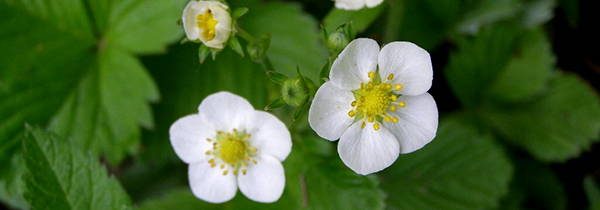
Strawberry blossoms are edible raw, although practically everybody waits for the fruit. But if you want to use them, you can always toss them in salads or use them as a garnish. You can even eat the leaves, but they have a bitter taste.
73. Sunflower (Helianthus annuus)
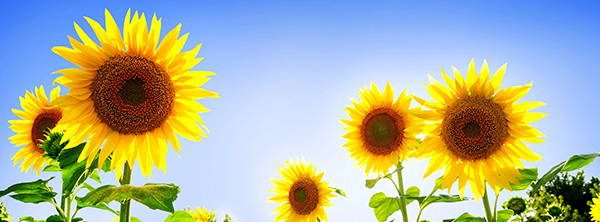
This flower is mostly known for its beauty or for its seeds, but you can actually eat the petals, the bud, and the leaves. The bud tastes like artichoke, while the petals have a bittersweet flavor. The leaves can be eaten in a number of ways: toss them in salads, cook them in a stir fry, or boil them like greens. Just remember to remove the tough center ribs of the leaves before cooking. If you peel young sunflower stalks, you can cut them into bite-sized snacks or toss into salads. They have a crunchy texture, and their flavor is similar to celery.
74. Sweet Olive (Osmanthus fragrans)
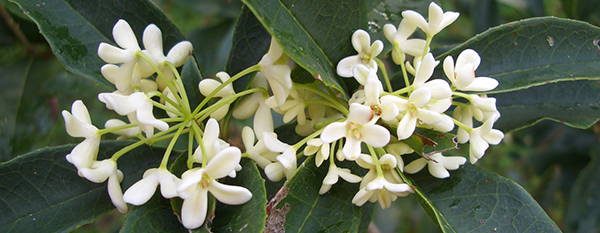
These lovely edible flowers can variate in color from white to yellow to orange. You can make jam, jellies, cakes, dumplings, soups, and liqueur. In Chinese cuisine, its flowers are infused with green or black tea leaves to create a scented tea.
75. Sweet Woodruff (Galium odoratum)

This delicate flower has a very interesting flavor; it’s sweet with a hint of a nutty, vanilla flavor. You can use them as a garnish, toss them in salads, or use them to decorate cakes and sweets. Just remember to eat in moderation because it can have a blood thinning effect.
76. Violet (Viola odorata and other viola species)
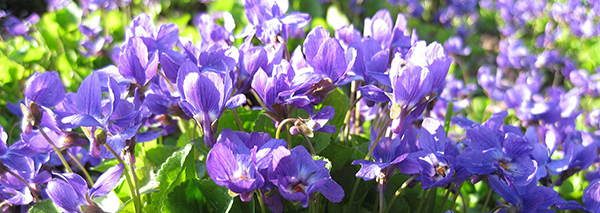
This sweet flower has a perfumed aroma and is often used for decorating different baked goods or to flavor jams and jellies. You can also toss the flowers or tender leaves in salads. The leaves actually have a high level of vitamins A and C. You can also cook them as greens.
77. Yucca Petals (Yucca species)
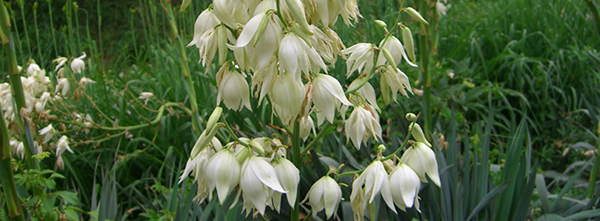
These beautiful white edible flowers have a crunchy consistency and a mildly sweet taste with a hint of artichoke. You can use its petals in salads or as a garnish. You can put them in omelets, frittatas, or soups.
78. Zinnia (Zinnia elegans)
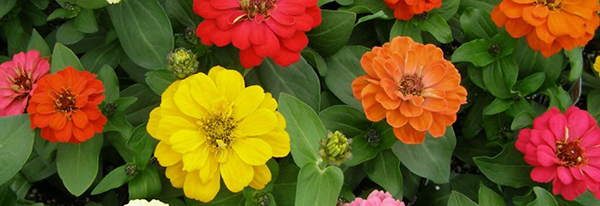
These edible flowers are most often planted for their beautiful appearance rather than flavor. However, you can put the petals in tacos or pancakes, make tea from them, toss them in salads, or use them to garnish cakes. They also are used in fruit and cheese platters.
79. Chicory (Cichorium intybus)
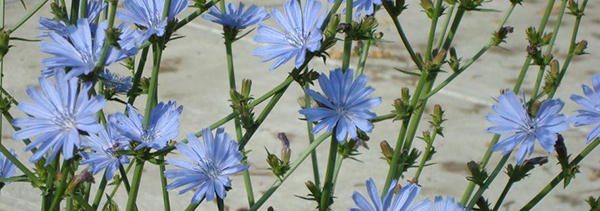
Chicory is a perennial herbaceous plant with a blue or lavender flower. You should eat only the leaves, and it’s preferable to consume them in the spring or autumn because in the summer they are a little bitter. They are best used in salads or mixed with other greens. The flower is also edible but is very bitter.
You may also like:
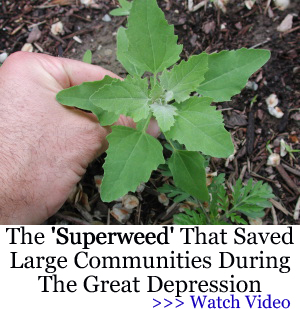 Burdock: The Annoying Weed That Can Save Your Life
Burdock: The Annoying Weed That Can Save Your Life
How To Make A Year-Round Self-Sustaining Garden (Video)
22 Ingenious Hacks to Make Food Last Longer

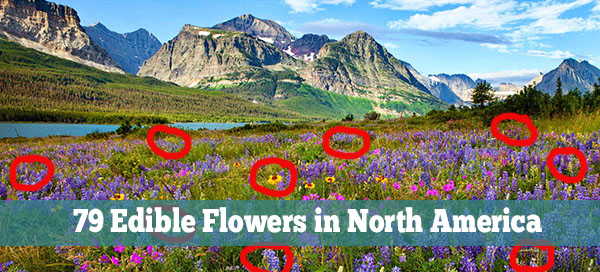

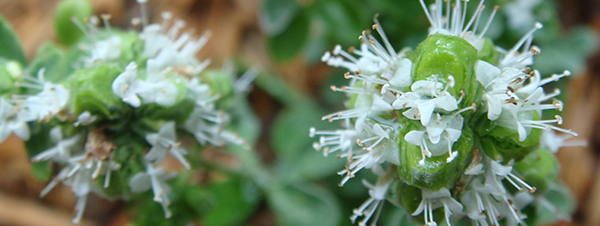
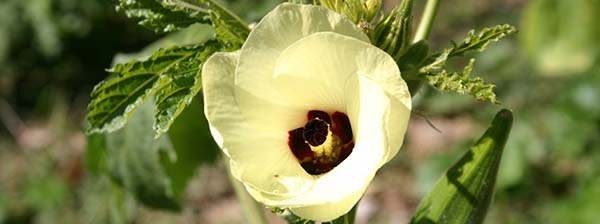











Lots of great information but not all The pictures match up with the flower mentioned
It is only incorrect when looking at it from my gmail app on my phone. It is correct when I switched to safari. So it was my end not yours.
Sorry for any inconvenience.
It seems like there is an error on some iphones. But on PC’s, laptops ipads and android’s everything is fine. The photoes are good.
The descriptions and photographs were very well done for both novice and expert. Thank You for supplying this additional information for those of us that want to be responsible for ourselves and those we love.
I had no idea that so many flowers and plants had an edible quotient to them.Thouroughly enjoying this lesson and study!! Thank you!!!!
Common marshmallow is althea off. The quince shown is not fruiting quince, but flowering quince, chaenomeles spp.
Thank you much for bringing this to my attention. I just changed the picture and the name.
very well done I can actually use this information thanks
Thanks for this great info.
I am also looking for a Central Florida or Florida edible plants book.
Xample: palmetto hearts I’ve eaten = great.
But are elephant-ear leaves & stalks safe to eat ??
Or lilly-pad plants – are they safe ??
Thanks for your help.
Hi Rick,
Elephant ears are edible, The root is pounded into an edible paste called poi and the leaves are used to wrap steamed meats and vegetables.
Almost all waterlilies (Nymphaea and Nuphar species) are edible and can be gathered most of the year. During the summer months, when the rootstocks become mushy and rather tasteless, they’re still an excellent source of survival food. Additionally, the young, unfurling leaves and unopened buds can be prepared as a potherb. The seeds can be parched, winnowed, and ground into a nutritious flour, and the potato-shaped tubers of the tuberous waterlily (N. tuberosa) can be dug from the mud and prepared like—what else?—potatoes. Two of the more common edible varieties are the yellow pond lily and the fragrant pond lily. (Be careful, though, to collect any such plants from pollution-free waters!)
This is a joy just in looking at the flowers! It’s too
bad they are only available for us a part of the year.
I wish my neighbors would eat the dandelions and
not spray them with Roundup. One day they may
have to use them as a food source.
Can’t wait to try out some in recipes. Than you!
I have eaten the flowering heads of grass. They are full of grass seeds. I blended them up with water honey and salt then put it through a fine strainer. It could be used for milk. Make sure there has not been any poisons put on the soil or grass.
so much more is edible with the yucca-roots,flower bud, flowers,& seed pods..A must learn.
are the sweet olive flowers from fruiting olive trees?
Do you have a beautiful picture handbook? The original lost ways has no color and hard to identify pics. I’m thinking pocket size for the go bag?
Hi Denny,
Thank you so much for your comment.
The Lost Book of Remedies is a beautiful book on natural remedies. It has color pictures and you can check it out here:
http://globalbro.bookofrem.hop.clickbank.net/?tid=0ABOR
God bless,
Claude
I use a few dried lavender flowers nearly every time I cook beef, they are wonderful together. I also have sucked the nectar out o the bulbous ends of columbine as a kid, – several years we children did this without any ill effects, – but of course, we live in the woods, and dont live near field of them, so there weren’t many blossoms for us to enjoy. They are sweet. i have also tasted wild blackberry flower petals. Haven’t studied them however. I think they may be nice in a cup of tea. I have dried blackberry leaves for herbal medicinal teas as well. Cherry trees also have cyanide in them- –actually most stone fruit trees, and apple seeds and tree do. avoid them unless you need to make a poison of them. Then, do it outdoors, with gloves and mask on.
So you wouldnt eat the blossoms?
Please be aware that Angelica has a poisonous look-alike known as Poison or Water Hemlock. Many skilled herbalists still confuse the look-alike plants when foraging in the wild and I personally would never ingest Angelica that I personally had not planted myself.
Is Scaevola flowers edible
I was wondering if all flowers with nectar are edible and that google search brought me here. I have an Aeschynanthus radicans and it produces lots of flowers which have nectar. So, I was wondering if these were edible too. Next, there are all these random websites with misinformation about edible and non-edible plants. And then I found the information – from a well known plant person online – that Gesneriads are safe under most circumstances and to most species.
The photo of your Jasmine is actually stephanotus, highly fragrant tropical vine ..I have no idea if they are edible.
Can anyone tell me if Salvia Blue Bedder Sage is edible? Thanks!
Hello, i think that i saw you visited my blog thus i got here to return the choose.I am trying to to find issues to enhance my site!I guess its adequate to use a few of your ideas!! kdbdddkdacacakcf
1 Program you’r planting of crops to coincide whenever you can log onto your farm to reap them. bcbcefafgddfdecb
just a damn fine site
You have a plant listed here that is poisonous, the hibiscus. All parts of a hibiscus plant is poisonous. The best way to tell if a plant is poisonous is if a rabbit won’t eat it or nibble on it, don’t touch it. Another plant is the orelander.
I pick and dry Hybiscus flowers. As they age, they even smell like tea. They make a lovely tea. Sometimes I mix them with green tea. Great flavor.
Hello thank you for all the info here!
I’m curios if Pentas are edible and purple salvia also??
I drink hibiscus tea all the time
Thank you for sharing all these wonderful beautiful flowers on there not just by looking beauty Paul they could do a lot of internal healing for us thank you so much for sharing
Anne, thanks for this article. I had no idea all those flowers were eatable. When SHTF happens, each could be fit into a hidden garden, something few would realize was food. niio!
Anne, Thank you so much for this wonderful article! There were two big takeaways for me. First, I bought a packet of the scarlet runner bean seeds this summer, but never got them in the ground. The thread that brought them to my attention was that there are things one can grow that are so ornamental that an unsavory poacher might overlook them as food. The takeaway here is that often more than one part of a plant might be edible. It jbroadened my perspective and I now understand that in some cases can use more of a plant. That may be a basic idea to some, but I found it very broadening. Secondly, I have been afraid to approach eating a lot of plants because of poisonous lookalikes. However, I played with snapdragons as a child so gained courage that there are edible plants I would not mistake and would feel comfortable trying. Sigh. It’s a start.
Gov: Runners need cooler weather. When mature, they can even handle some frost. Heat, no, worse luck. While Mom raised them in Chandler (not far from Phoenix, zone 10) the season is too short for me (zone 9). They produce a tuber that, if you get hard freezes, can be stored (might be in damp dirt or sand) till late spring and replanted or eaten. there are stringless varieties now coming to us from northern Europe. It’s tempting and I may start them in the house in July next year. Lucky you, you hav cool damp summers, like where it originated. niio
Thanks, Red. I will hang on to your tips. This is such a wonderful site because you and others share knowledge that is not readily available. There is a man here who plants a very early bean and when it shows above ground he knows the soils is warm enough to plant the rest of his garden. He doesn’t query the county extension agent website on his IPad to check the soil temperature. This knowledge would disappear if you didn’t share it. Look at all the knowledge we have lost through dead languages. Anyway, thank you very much. By the way, my post was supposed to say “unsavvy” poachers, but maybe poachers unless truly starving are unsavory too. Won’t find out till we get them on the barbie. : )
LOL!
The scarlet runner beans are also edible,very good eating, and also let grow on and get big for shellies.
I think that you solved a mystery for me. In the yard at our new house, a plant grew up in the Spring that looked like it was in the arugula or dandelion family. But it went to flower and the flowers were purple. It has seedpods that point out like little knives from the side. I had no idea what it was but it sure looked edible and was tasty when I had some. Based on your description I’m gonna pull one out and see if it has a radish root! It sure fits your description. Thanks so much for all of the great info. I had no idea that so many annual flowers are edible.
I know that this post was a lot of work. Thank you to the author for such a fine article.
There are no pictures in this article, not one. I am using a PC with windows 7 & Firefox browser.